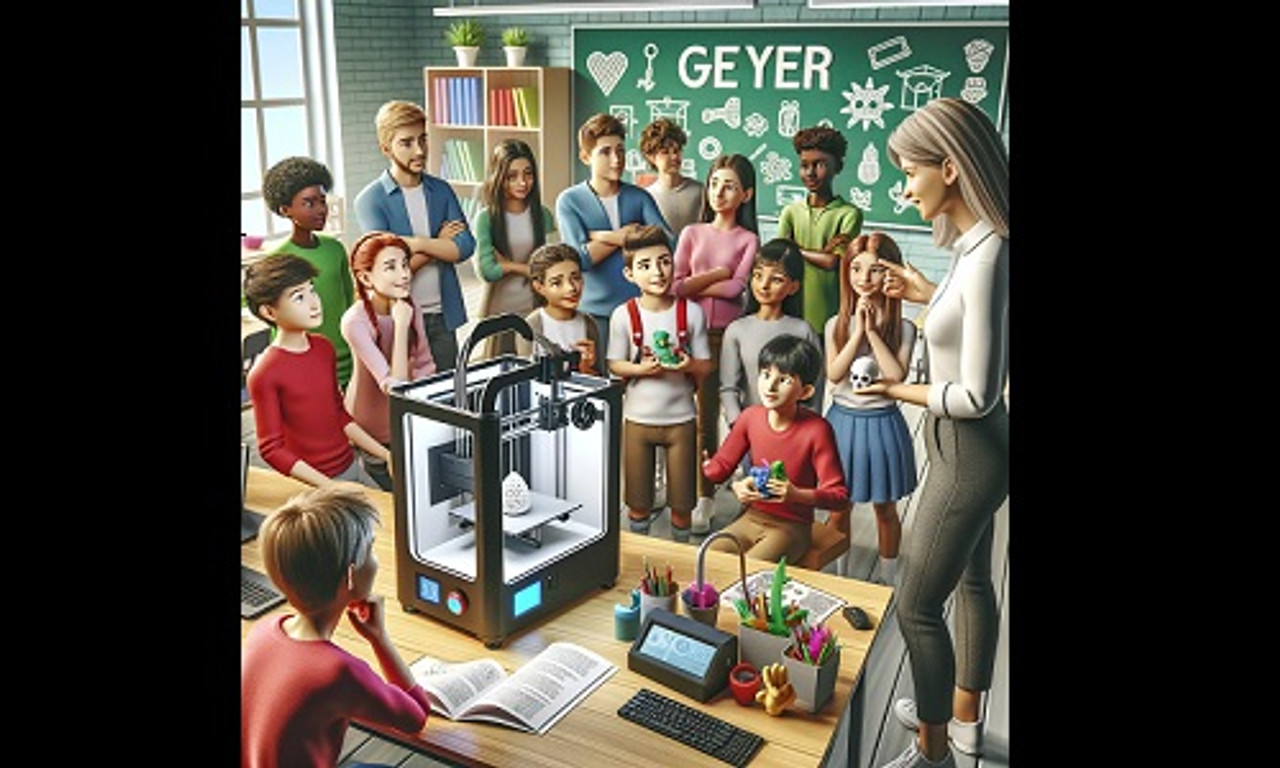Embracing the Future: Integrating 3D Printing into Your Classroom
23rd Jul 2024
As educators, we constantly seek innovative ways to engage students and enhance learning. Integrating 3D printing into your classroom can revolutionize your teaching approach, providing hands-on experiences that foster creativity, problem-solving, and critical thinking. Here’s how you can seamlessly incorporate 3D printing into your curriculum:
Why 3D Printing?
Engage and Motivate
3D printing captivates students' interest, making abstract concepts tangible. From creating historical artifacts to designing engineering prototypes, the possibilities are endless.
Develop Essential Skills
Students learn valuable skills such as design thinking, spatial awareness, and iterative problem-solving, preparing them for future careers in STEM fields.
Encourage Collaboration
3D printing projects often require teamwork, enhancing communication and collaboration skills.
3D Printers | Geyer Instructional Products
Practical Classroom Applications
Elementary Schools
Introduce foundational skills through simple projects. For instance, students can print and assemble basic geometric shapes to understand geometry concepts better.
Middle Schools
Build on these skills with more complex projects. Create models of molecules or historical buildings, which can make learning more interactive and fun.
High Schools
Use 3D printing to tackle advanced design challenges. Encourage students to design and print prototypes for engineering projects, helping them develop practical skills for future careers.
Tips for Successful Integration
Start Small
Begin with simple projects and gradually increase complexity as you and your students become more comfortable with the technology.
Encourage Exploration
Allow students to experiment and learn from their mistakes. This trial-and-error approach is crucial for developing problem-solving skills.
Integrate Across Subjects
Use 3D printing in various subjects. For example, print topographic maps for geography, anatomical models for biology, or ancient artifacts for history.
Overcoming Challenges
Budget Constraints
Look for grants and funding opportunities specifically aimed at incorporating technology into classrooms. Boxlight also offers extended warranties and starter kits to ensure you have all the necessary resources.
Technical Difficulties
Utilize the robust support and training resources provided by Boxlight. Their online guides and troubleshooting tips can help resolve common issues.
Time Management
Integrating new technology can be time-consuming. Plan projects that align with your curriculum goals and use ready-made lesson plans to save time.
Advanced Techniques and Tools
Customizing Lessons with 3D Software
Utilize 3D modeling software like Tinkercad or Fusion 360 to create custom lessons that align with your curriculum goals. These tools offer user-friendly interfaces that help students bring their ideas to life.
Integrating 3D Scanning
Incorporate 3D scanning to replicate real-world objects. This technology allows students to scan and modify objects, enhancing their understanding of the design process.
Virtual and Augmented Reality
Combine 3D printing with VR and AR to create immersive learning experiences. For example, students can design objects in a virtual environment before printing them.
Building a Community of Practice
Collaborate with Colleagues
Work with fellow teachers to share ideas and resources. Collaborative efforts can lead to more comprehensive and engaging projects.
Participate in Online Forums
Join online communities and forums dedicated to 3D printing in education. These platforms provide a wealth of knowledge and support from educators worldwide.
Attend Workshops and Conferences
Participate in workshops and conferences to stay updated on the latest trends and best practices in 3D printing for education.
Assessing Student Progress
Formative Assessments
Use formative assessments to monitor student progress throughout 3D printing projects. Regular check-ins and feedback sessions can help guide students and address any challenges they encounter.
Summative Assessments
Implement summative assessments to evaluate the final projects. Criteria can include creativity, accuracy, problem-solving skills, and teamwork.
Portfolios
Encourage students to maintain portfolios of their 3D printing projects. This practice not only showcases their work but also helps them reflect on their learning journey.
Conclusion
Incorporating 3D printing into your classroom is a transformative step towards enhancing student engagement and learning. By starting small, utilizing available resources, and encouraging a hands-on, exploratory approach, you can create an innovative learning environment that prepares students for the challenges of the 21st century. Embrace the future of education with 3D printing and watch your students' creativity and problem-solving skills soar.

